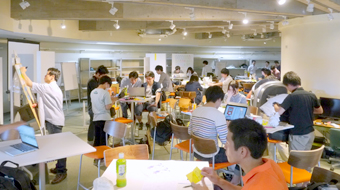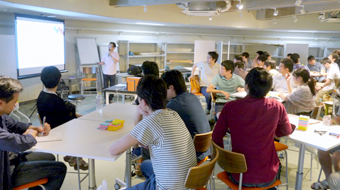Education
Engineering Sciences and Design
Graduate Major5 Features
Using engineering knowledge
and skills to contribute to
an increasingly diverse
and complex society
-
1
A Learning Experience That
Transcends Specializations
The Graduate Major in Engineering Sciences and Design, which accepts individuals with various backgrounds, provides many learning opportunities based on interaction among students with different areas of specialization. In addition, the curriculum is designed to provide students with learning experiences that transcends their own specializations. There are opportunities to mix and work with overseas students, working adults, and participants and mentors from companies taking part in PBL (Project-Based Learning) Courses, and it is possible to participate in PBL Courses run together with students and faculty members from art schools.
-
2
Tokyo Tech Design
Factory
The Tokyo Tech Design Factory is equipped with many 3D printers and machining tools, and consists of CoLab, where needs are translated into ideas, FabLab, where ideas are transformed into products, ExpLab, where products produced in the FabLab are actually used and the user experience is evaluated, and BizLab, where business models for products are established. Through the design experience in the Factory, practical education and research is achieved.
-
3
Practical Learning through
Interdisciplinary PBL
PBL Courses form the core of this graduate major and the curriculum is designed to allow students to acquire practical skills. PBL Courses include Basic Design Thinking and Engineering Design Project A, B, and C. These are supervised by IDEO, a design and innovation consulting firm in the United States. First, students learn design thinking in the Basic Design Thinking course and then through Project A, a virtual project based on design thinking, experience engineering design. Students then move on to Projects B and C where they tackle real tasks provided by companies.
-
4
Collaborate with Local Communities
and Industries
The Graduate Major in Engineering Sciences and Design collaborates and cooperates with the Ota City Industrial Promotion Organization, major companies, startup companies, and venture capital firms to provide practical tasks and lectures to students. Furthermore, students get the opportunity to work with a mentor — a member of staff at a relevant company or organization — as well as learn together with these and other such people. This arrangement is ideal for students to learn practical engineering design.
-
5
Know the World through
Engineering Design
We aim to develop individuals who play an active role at a global level. In addition to courses at an international standard, such as Basic Design Thinking, and interaction with overseas students and faculty, we provide various opportunities for students to broaden their horizon, which includes exchange programs with overseas universities, PBL Courses that include short-term exchange students, and participation in overseas innovation events.
